![]() I regularly revisit the 1999 Computer Gaming World article “The Next Big Thing: 5 Games That Will Change Gaming,” which heralded the promise of beautiful, open environments in Bungie’s Halo. When my brother got an Xbox two years later, I watched him play through the first level of what appeared to be your typical shooter, mowing down waves of aliens in narrow corridors. When he shortly thereafter crash landed on an ancient ringworld characterized by rolling hills and monolithic alien architecture, and commandeered the series’ now iconic light reconnaissance vehicle to engage enemies on a wide open battlefield, I saw the promise of those early previews fulfilled.
I regularly revisit the 1999 Computer Gaming World article “The Next Big Thing: 5 Games That Will Change Gaming,” which heralded the promise of beautiful, open environments in Bungie’s Halo. When my brother got an Xbox two years later, I watched him play through the first level of what appeared to be your typical shooter, mowing down waves of aliens in narrow corridors. When he shortly thereafter crash landed on an ancient ringworld characterized by rolling hills and monolithic alien architecture, and commandeered the series’ now iconic light reconnaissance vehicle to engage enemies on a wide open battlefield, I saw the promise of those early previews fulfilled.
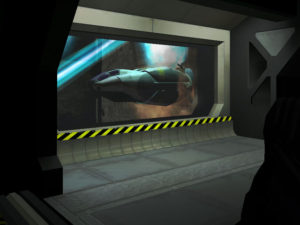
The sprawling environments for which the series is known carried over from the earliest phases of its development and its origin as a real-time strategy game, which began to morph into an action game in a continuous open world. But as much as the development of Halo was “a series of happy accidents” that led down a twisting path to its fateful release, it was also a product of a conscious, concerted effort to do something different than those that had come before. “Another thing that we were trying to react to at that time,” explains environment artist Dave Dunn, “was a lot of the first-person shooters were still corridor, corridor… and your suspension of disbelief is sort of challenged that those are real spaces.”
In the first level after you crash land on Halo, almost all of the encounters take place in large, nonlinear spaces, some of which have more than one entrance. In the “Reunion Tour” chapter, you are tasked with rescuing your fellow soldiers and crew members. Following a tunnel that cuts through the cliff faces, you eventually arrive at a beautiful, wide open vista than beckons to your instinct for exploration. As you climb a hill in the Warthog, the terrain unfolds in every direction, leaving it up to the player as to where to take the fight. Signal flares and other signposts help you spot areas of interest, but the space is not intended to confine you to a particular path. And the first of these things you might notice, a crashed escape pod, has an equal chance of pointing you in one of several directions. That the three destinations might be reached in any order makes for a much more natural, immersive experience.
In conjunction with the sprawling spaces, the combat encounters themselves have an appropriately dynamic, nonlinear feel. Each encounter space has two entrances which present a dramatically different view of the battlefield. And depending on which side of the space you arrive, you will make significantly different choices regarding your approach to combat. And the choices you make may affect what weapons you have available to you in the next encounter, and so each decision you make cascades to the next enhancing the unpredictable nature of this loosely controlled experience.
Despite deliberate attempts, sequels have failed to reproduce the experience of this level. “It is the case that pacing in Halo 1 was largely accidental, and then subsequent Halo games have tried to recapture elements of that intentionally,” explained designer Jaime Griesemer. “And sometimes it’s just easier to luck into it.” As is often the case with these reminiscent sequences, there are not only narrative parallels to the original level but rhyming art direction. Halo 4 begins with you having crash landed on a Dyson sphere instead of a ring world, in a circular space that conveys the disorientation resulting from your fall to the surface. And like Halo, the new level Requiem features rolling green hills and contrasting geometric architecture.
The encounter which most closely resembles those of the Reunion Tour chapter of the original is set in a similarly circular, open space. Setting aside explicit references to the first game, however, this experience bears little resemblance to the thrilling encounters of your first mission on Halo. Hamstrung weapon range, somewhat static and isolated clusters of enemies, and the absence of a marine allies negates the wealth of options that made these encounters in the first game so epic, dynamic, and interesting.
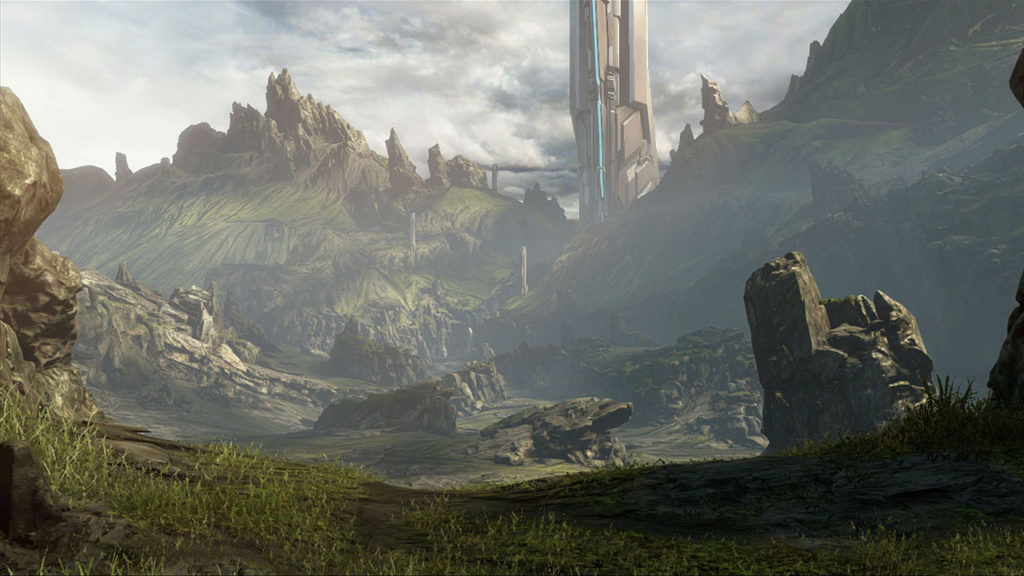
What follows is a increasingly linear experience culminating with a long bridge leading to an enormous hallway. Although you are given some latitude to navigate the space as you wish, each successive encounter is placed one right after the other in a straight line. While the sense that you are following a predestined path to some extent serves the story, it also underscores the feeling of being in a constructed space rather than a real place. And when you force players down a more or less predetermined path, gameplay tends to be lifeless and predictable. At best, presenting a particular engagement distance or angle of attack still strongly implies a preferred route and discourages players from seeking their own approach or devising their own strategies.
It is generally true of most modern shooters that the player navigates through a linear series of spaces connected to the previous by an entrance and to the next by an exit. Even Halo, which is much more wide open than most of its competitors, has few exceptions to this format. The best deviations tend to result from a perfect storm of industrial conditions, technological constraints, and production practices. B30, known in the shipping game as The Silent Cartographer, is an island environment built first and foremost as a testbed.
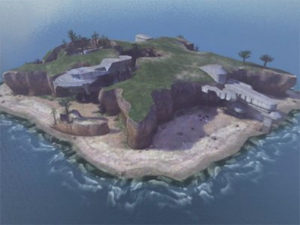
Designer Jaime Griesemer explains how this level emerged out of the production process. “We needed a space that could prove out a bunch of assumptions we were making, especially about the engine. And so an island in the middle of nowhere is great because there isn’t anything to render in most of the directions.” Canyons which cut through the center of the island further took advantage of the binary space partition rendering method, wherein the level geometry is divided into segments such that the game draws only those visible to the player. And from the canyons, as with the beaches, only one or two of these sections can be seen at a given time.
An island was also perfect from the perspective of player navigation. “We made it into a circle,” explains Griesemer, “because we wanted a very freeform atmosphere where you could go wherever you wanted. But we didn’t want you to be able to get lost, and in a circle you can’t get lost. You keep going in one direction… eventually you’ll arrive at where you’re supposed to go.” The basic nature of the level gives you a very strong impression of being in a real space, as an island has defined parameters and its full extent is represented therein. But because the space essentially circular, it allows for bidirectional navigation rather than truly nonlinear exploration. The beach forms a continuous loop around the island, with open ocean on one side and sheer cliff faces on the other. These features focus your exploration within a swath of space and give you clear signposts by which to navigate. Of course, real spaces have constraints impose limits on navigation, so this does not feel at all contrived. And although the navigation of the space is relatively uncomplicated, it gives you a strong sense of freedom because the circularity of its design divorces your experience from the notion of linear progression. Forward and backward share what is essentially the same meaning, and from this relationship the feeling of freedom emerges.
Without a precise plan and guided only by these broader objectives, the designers of Silent Cartographer created one of the most memorable levels in the entire series. While a variety of factors contributed to this perfect storm – the space was also used to develop the AI system and its encounters received a great deal of iteration and polish – ultimately what stands out most to players is the environment.
One of the best examples of a peculiar set of industrial conditions and production practices yielding lightning-in-a-bottle success is Rareware’s GoldenEye. It was created by a small team of first-time developers, so there was less careful planning and more shooting from the hip. Originally intending to make a rail shooter in the vein of Virtua Cop, the designers did not carefully consider player navigation or many of the other aspects essential to a first person shooter experience. ” The level creators, or architects were working without much level design, by which I mean often they had no player start points or exits in mind. Certainly they didn’t think about enemy positions or object positions,” lead designer Martin Hollis explained. “The benefit of this sloppy, unplanned approach was that many of the levels in the game have a realistic and non-linear feel.”
As their first priority was the creation of interesting spaces, the environment artists produced sprawling levels, parts of which the player would never encounter during the course of normal gameplay. Without the whiteboard and mass out phases that are the cornerstone of well-planned production, what they built more closely resembled real places than video game levels. “This is an anti-game design approach, frankly.” Hollis admitted. “It is inefficient because much of the level is unnecessary to the gameplay. But it contributes to a greater sense of freedom, and also realism. And in turn this sense of freedom and realism contributed enormously to the success of the game.”
When Rare began work on Perfect Dark, the spiritual successor to GoldenEye, they had two and a half years of experience, and one of the most beloved games of all time, under their belt. No longer an unproven team working on an unproven concept, they knew what worked and needed to recapture that freedom and realism, but through more intentional and efficient level design. One of the best examples is the sequence of missions that takes place in Area 51. The first of these missions, Infiltration, begins with the player character climbing down into a canyon. Although there is only one way out of these narrow confines, the guards on your right at the beginning of the stage force you to focus your attention in the opposite direction in which you will soon proceed. This simple detail takes what could be a highly linear space and makes your experience of it more natural.
Upon exiting the canyon, you immediately see your objective, the gate which you must pass to enter the base. Your path through the level, however, is not so straightforward, as you must turn to your left and walk far past the gate in order to complete a secondary objective. By requiring the player to move around in and explore a level, and by structuring the space so that it demands and supports nonlinear or bidirectional navigation, designers can create a much more natural, immersive experience for players.


Even Doom, which from our current vantage point is easily criticized for its uncomplicated fiction and arbitrary objectives, has relatively sophisticated layouts and a more realistic use of space compared to many modern shooters. Although you do little more than find keys to open doors, the way this simple objective guides players through the level prevents it from being something that players are merely moving through. It forces them to explore the world, to orient themselves, to navigate and backtrack. While developers today leverage more money and technology to create believable environments, their more focused designs tend to rob them of this crucial aspect of immersion. But the reuse of geometry has typically been viewed unfavorably by consumers, and backtracking tends to be thought of as boring, so it is unlikely for any of these older trends to reappear, given that most of these shooters are tightly paced, big budget affairs.
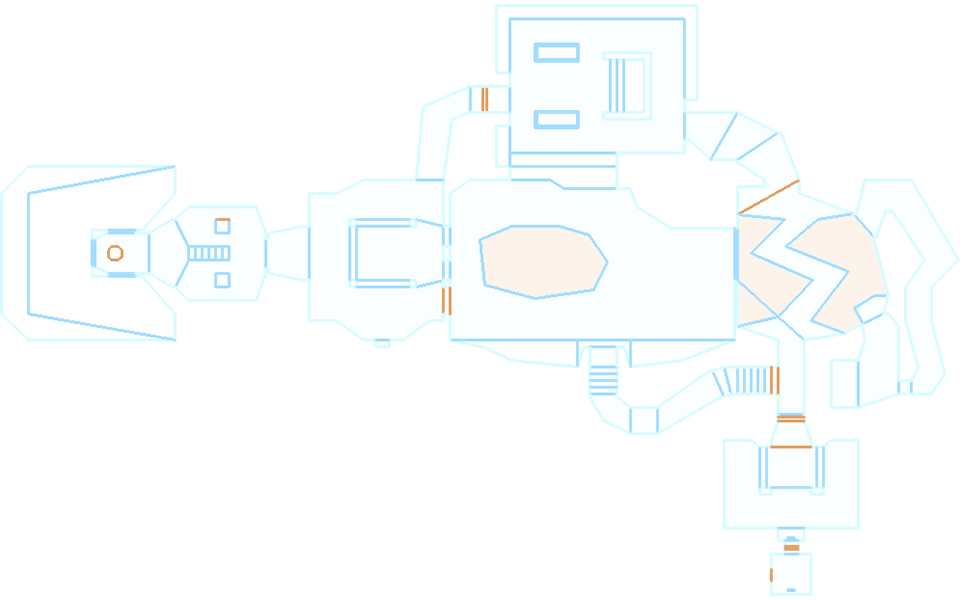
Along with the design of individual spaces, their implementation in the overarching path of the game can contribute to continuity and counteract the linearity inherent in a traditional level structure. In Perfect Dark, for example, your base of operations can be accessed at any point from the main menu. When in one of the final levels you must defend it from invaders, it takes on a familiarity that other missions do not. While Carrington Institute: Defense is one of the most intensely nonlinear and heavily backtracked levels in the game, navigation is improved because players will already know its layout. Since you have an established relationship to the space, as one to which you regularly return and that you can move about at your own pace, the designers can rely on your memory and treat the level like a familiar place, adding realism and emotional resonance to the experience.
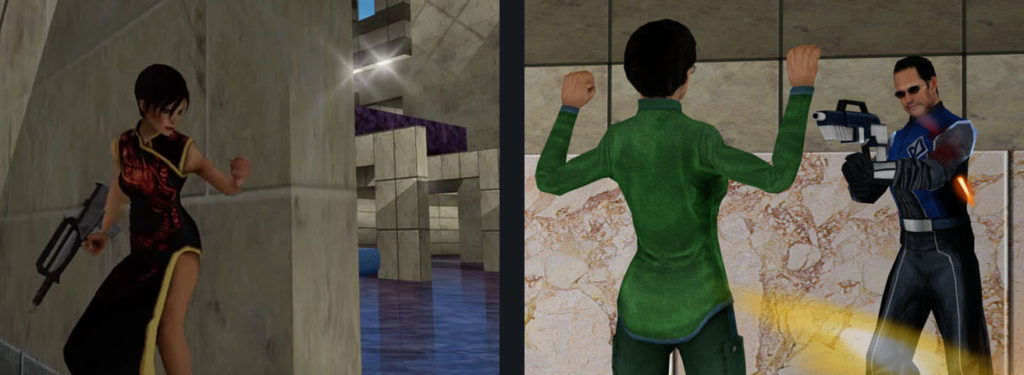
Of the ten campaign missions in Halo: Combat Evolved, the final three are based on previous levels. This practice of recycling geometry is generally considered to be a compromise between giving the players a lengthier experience and stretching the work that developers are able to do in a finite amount of time, and in this case it was definitely motivated by an accelerated production schedule. Environment artist Paul Russell recalls “looking down the barrel of the gun,” as they struggled to pull missions together and meet their launch deadline. “The production cycle was January 2001 to August of 2001. Seven months of crunch because we had nothing in January, you know, except for characters.”
Although these less than ideal circumstances constrained their vision for the game, the repeated spaces make the alien ringworld feel more like a persistent place and strengthens the arc of the overall experience. The act of retracing your steps maximizes the emotional resonance of your journey. You see the effect of the human-Covenant conflict and the Flood infestation. You see the heavy price paid by your allies. You feeling a growing sense of isolation, which places the mounting pressures of your mission squarely on your shoulders. Were you instead traversing all new environments, your attention would be divided by novelty.
But when you return to the wreckage of The Pillar of Autumn, everything is orchestrated to make you feel this emotional resonance as loudly as possible. And while the scene would not be what it is without Marty O’Donnell’s evocative choral eulogy “Remembrance” it is returning to the charred remains of the ship that brought you to Halo which produces an air of finality. “At Bungie we have what we call storytelling channels,” says writer Joe Staten. “The number one thing at the very top of the list, the biggest impact storytelling channel is our environments.” When you reach the climax, you get the sense of having gone on a complete journey, as you return from whence you came and see the consequences of these events reflected in your origin.
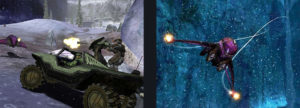
While reused levels and recycled geometry might be something that is looked upon unfavorably by developers from a production standpoint and by gamers as consumers, consider what modes are most popular. Players spend vastly more time in the multiplayer space than they do in the single player campaign. Halo multiplayer has been played billions of times, with gamers registering a total kill count exceeding the combined population of all humans that have ever lived. But multiplayer is a fundamentally nonlinear, intensely repetitive affair. As it turns out, players crave the familiarity of these spaces, but we are conditioned to believe that story is a linear series of events and do not accept that campaign spaces should be used in the same way as multiplayer spaces. However, it should be obvious that fully knowing and inhabiting a space, makes it feel less like a linear channel and more like a place where you actually are.

Just being there, as an avatar in a virtual world, should be a source of entertainment in and of itself. Engineer Chris Butcher recalls his first experience playing Halo. “I was just sitting there thinking to myself and saying this – this is a world. You know, these engine systems that everybody had built before I got there, they’re creating this world that players are going to be in and spend time in.” And by providing players with a dynamic, open environment with which they can interact, you elevate their position in the story from witness to agent.
While you can sustain player interest by forcing them through a tightly scripted series of events, they aren’t going to feel as though they are experiencing something. They’re not going to feel as though these moments have uniqueness and life if it is intended that everyone who plays the game has the same experience. The thing that separates games from other forms of entertainment is not that they are active instead of passive – obviously all media require some level of engagement – it’s that they allow you to act, to have agency. But when a game leads a player by the nose down a narrow path, then it’s undermining the ultimate potential of interactivity, whereby the user defines the experience.
While game narration tends to be egocentric, in that you are typically the most powerful character, when this focus on the user plays out on every level, with events and encounters presented to you in a straightforward fashion, the notion that you are empowered within this world will erode. Any time the game plays out in a particular, predetermined way, it undermines the player’s authority in favor of the designer’s authorship. The world is not a direct path with flashing arrows pointing in one direction. Space something that surrounds you, which you in turn inhabit and can impact.